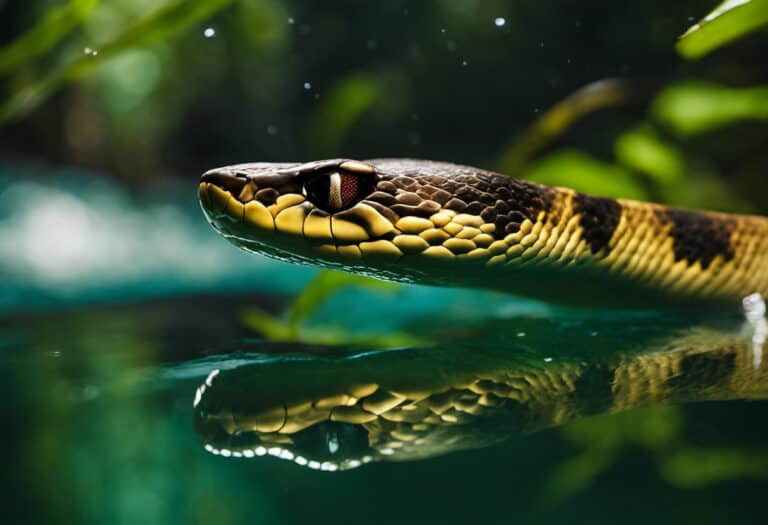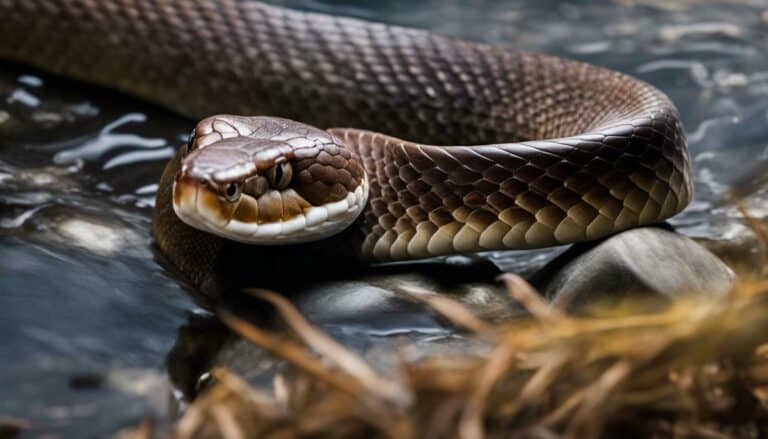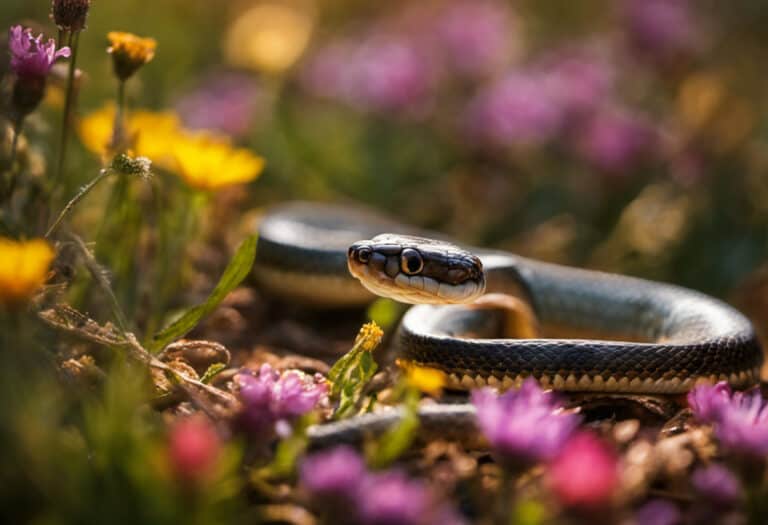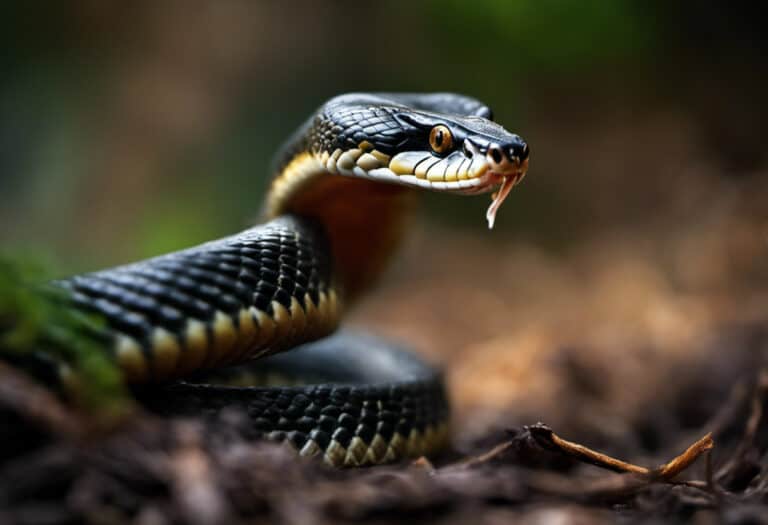Do Bull Snakes and Rattlesnakes Mate?
Have you ever wondered if bull snakes and rattlesnakes can mate and produce offspring? Well, wonder no more!
This article dives into the captivating world of snake breeding, exploring the intriguing possibility of hybridization between these two snake species.
Discover the factors that influence hybridization, the characteristics of hybrid offspring, and the ecological implications of this phenomenon.
Get ready to uncover the answer to the fascinating question of whether bull snakes and rattlesnakes can indeed mate.
Key Takeaways
- Bull snakes and rattlesnakes are both species of snakes that belong to the same family, Colubridae.
- Hybridization between bull snakes and rattlesnakes is a rare phenomenon, more likely to occur in captivity and areas where their ranges overlap.
- The offspring of bull snakes and rattlesnakes may exhibit a combination of traits from both species, including intermediate color patterns, varying venomousness, and some may possess rattles on their tails.
- Hybridization can have ecological implications, including gene flow between species, impact on genetic diversity and adaptability, and complications for species identification and conservation efforts.
Factors Influencing Hybridization Between Bull Snakes and Rattlesnakes
In areas where the ranges of bull snakes and rattlesnakes overlap, factors such as temperature, humidity, and geographic proximity can influence the likelihood of hybridization.
These factors play a crucial role in determining the occurrence of hybrid offspring between the two species.
The temperature and humidity levels in the environment can affect the reproductive behaviors and physiology of the snakes, potentially leading to hybridization.
Additionally, the geographic proximity between populations of bull snakes and rattlesnakes increases the chances of encounters and mating opportunities.
Habitat fragmentation and human activities can also contribute to the mixing of these species.
Understanding these factors is important for managing and conserving snake populations, as well as for studying the potential impacts of hybridization on the genetic diversity and adaptability of both species.
Characteristics of Hybrid Offspring
The hybrid offspring of bull snakes and rattlesnakes may display a combination of traits from both species, including intermediate color patterns and varying degrees of venomousness. These hybrids serve as fascinating examples of genetic diversity and adaptability within snake populations.
The presence of hybrid individuals can potentially impact the genetic integrity and diversity of both bull snakes and rattlesnakes. This introgression of genes between the two species through hybridization can have long-term consequences for their survival and conservation.
Furthermore, the existence of hybrid offspring may complicate species identification and conservation efforts. Understanding the potential impacts of hybridization on snake populations is crucial for effective management and conservation strategies.
Ecological Implications of Hybridization
Understanding the ecological implications of hybridization is important for effectively managing and conserving snake populations.
Hybridization between bull snakes and rattlesnakes can have potential impacts on genetic diversity and the adaptability of both species.
The role of human activities in hybridization can’t be ignored. Factors such as habitat fragmentation and human-induced changes in the environment can increase the chances of encounters between bull snakes and rattlesnakes, leading to hybridization.
This gene flow can potentially impact the genetic diversity and adaptability of both species.
The presence of hybrid individuals can complicate species identification and conservation efforts. Therefore, it’s crucial to consider the ecological implications of hybridization when managing and conserving snake populations.
Conservation Considerations for Bull Snakes and Rattlesnakes
Knowing the importance of conserving bull snakes and rattlesnakes, it’s crucial to protect their habitats and ecosystems to ensure their long-term survival.
Hybridization between these species has genetic implications that can impact their diversity and adaptability. Conservation strategies for managing hybrid populations of bull snakes and rattlesnakes should focus on maintaining genetic integrity within each species.
Monitoring and research are necessary to assess the extent and impact of hybridization on these snake populations. By understanding the ecological implications of hybridization, we can develop effective conservation measures.
Protecting the habitats and ecosystems where both species occur is essential. This will help preserve the natural behavior and breeding patterns of bull snakes and rattlesnakes, and ensure their populations remain stable and sustainable.
Differences Between Rattlesnakes and Bull Snakes
You can easily distinguish between a rattlesnake and a bull snake by looking at their head shape and venomousness.
- Rattlesnakes have a triangular-shaped head, while bull snakes have a narrow head.
- Rattlesnakes are venomous pit vipers, while bull snakes are nonvenomous constrictors.
- Rattlesnakes produce a rattling sound by shaking their tails, which is a warning signal.
- Rattlesnakes are found in deserts, grasslands, and forests, while bull snakes are found in grasslands, prairies, and farmland.
- Identifying the species correctly is important for understanding their behavior and ensuring safety.
Differences in behavior:
- Rattlesnakes use their venom to immobilize prey and for self-defense.
- Bull snakes rely on constriction to subdue their prey.
- Rattlesnakes have a more defensive nature and may strike if threatened.
- Bull snakes are generally more docile and are known for their bluffing behavior.
- Understanding the differences in behavior is crucial for interacting with these snakes safely and responsibly.
Importance of species identification:
- Accurate species identification helps in conservation efforts and understanding ecological roles.
- Knowing the venomousness of a snake is vital for personal safety and medical treatment.
- Conservation measures can be tailored to the specific needs of each species.
- Species identification also aids in studying their distribution and population dynamics.
- Overall, proper species identification is essential for promoting coexistence and preserving biodiversity.
Frequently Asked Questions
How Can Temperature and Humidity Affect the Likelihood of Hybridization Between Bull Snakes and Rattlesnakes?
Temperature and humidity play a significant role in the likelihood of hybridization between bull snakes and rattlesnakes. These environmental factors can create conditions that increase the chances of encounters and potential mating between the two species.
What Are the Specific Environmental Factors That Can Increase the Chances of Encounters Between Bull Snakes and Rattlesnakes?
Factors affecting encounters between bull snakes and rattlesnakes include temperature, humidity, and human activities. Environmental conditions can influence the likelihood of hybridization. Understanding these factors is important for managing snake populations and conserving their habitats.
Do Male Bull Snakes Have a Higher Tendency to Mate With Female Rattlesnakes Compared to Other Species?
Male bull snakes may have a higher tendency to mate with female rattlesnakes compared to other species. This could be influenced by pheromones and behavioral differences. However, more research is needed to fully understand their mating preferences.
In What Specific Areas Are Hybrid Offspring More Commonly Found, Where the Ranges of Bull Snakes and Rattlesnakes Overlap?
Hybrid offspring of bull snakes and rattlesnakes are more commonly found in specific habitats where their ranges overlap. These areas provide opportunities for behavioral interactions between the two species, leading to the occurrence of hybrid offspring.
Can Hybrid Offspring of Bull Snakes and Rattlesnakes Reproduce, or Are They Infertile?
Hybrid offspring of bull snakes and rattlesnakes may have reduced fertility compared to purebred individuals due to genetic incompatibility. Their ability to reproduce depends on the extent of genetic differences and the specific traits inherited from each parent.
Conclusion
In conclusion, while the possibility of bull snakes and rattlesnakes mating and producing hybrid offspring may be intriguing, it’s important to acknowledge the significant differences in their mating behaviors and genetic makeup. These factors make successful interbreeding between the two species highly unlikely.
Despite this, it’s crucial to continue conservation efforts and understand the distinctions between bull snakes and rattlesnakes to ensure their long-term survival and the preservation of their unique ecological roles. By doing so, we can contribute to the protection of these fascinating snake species and their habitats.






